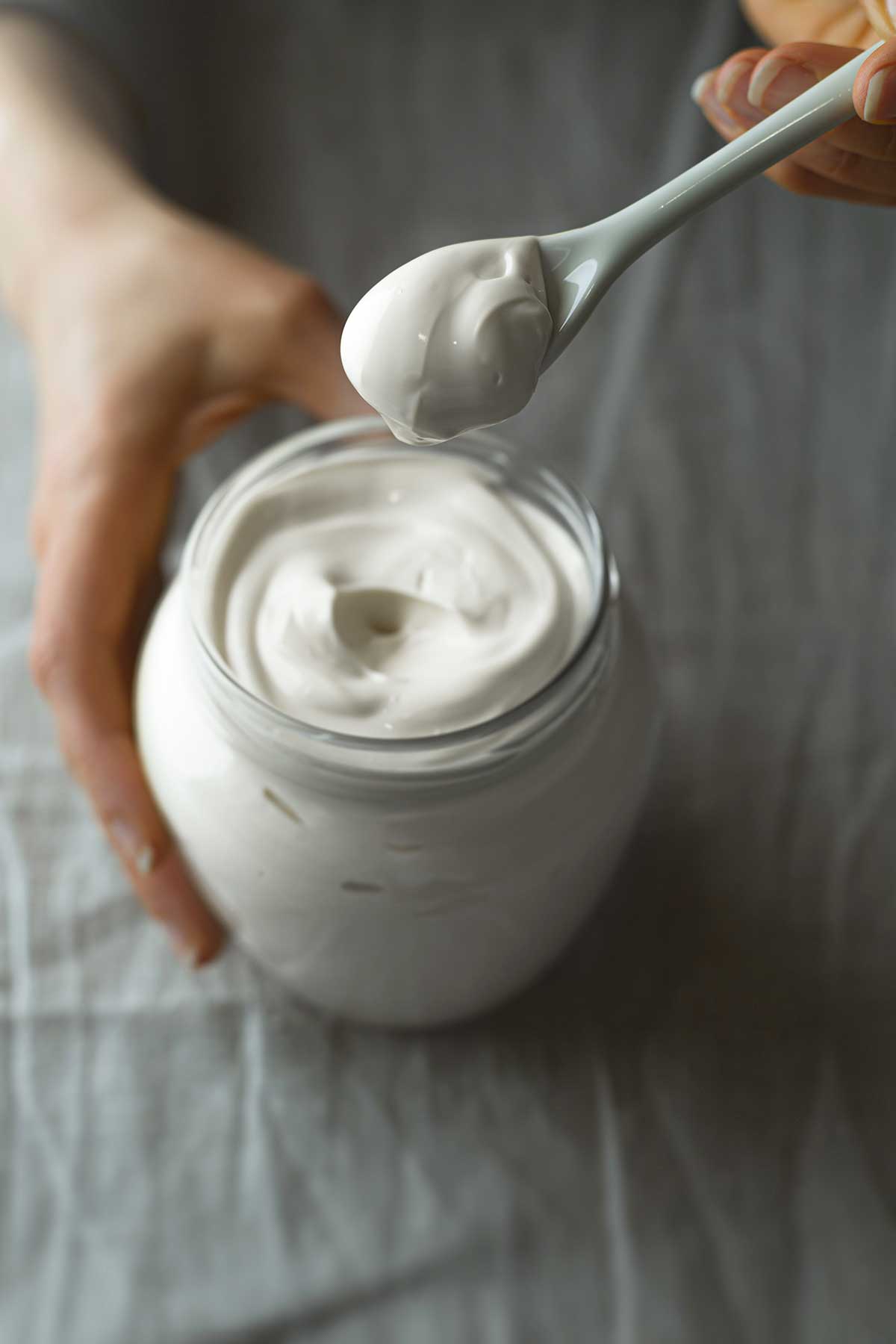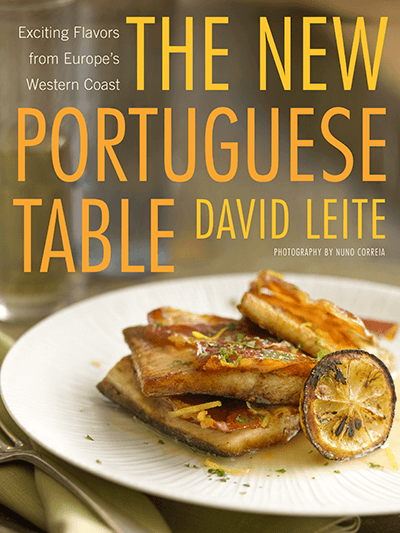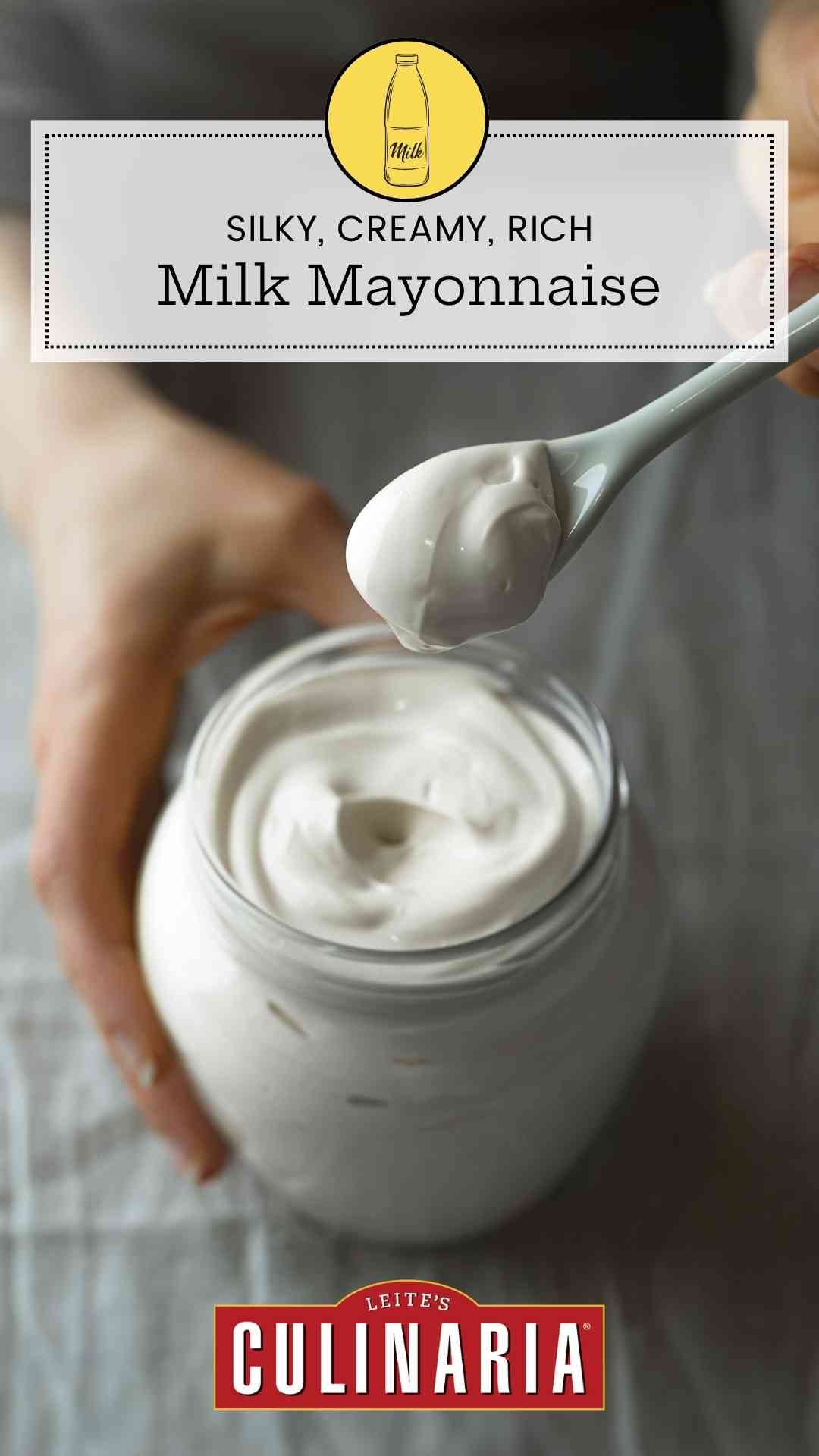
This is one of those recipes that require quotation marks, not out of affectation, but because it’s not a true mayonnaise. It contains no egg yolks or mustard. It’s nothing more than an emulsion of milk and oil. More Brazilian than Portuguese, it’s just now beginning to be used on the Continent. The taste is lighter and cleaner than that of egg-based mayonnaise, allowing other flavors to come through.
☞ Read the Article: The Secret Behind Milk Mayonnaise
Since I was given the recipe, I haven’t stopped finding ways to cook with it. The master recipe is only a canvas for additions. Besides the uses in this book, I’ve smeared the variations on grilled meats and fish, used them as dips and in dressings, spread them on sandwiches, and stirred them into potato salads, much as I do with actual mayonnaise.
Why Isn’t my Mayonnaise Emulsifying?
Like all emulsions, this recipe can be a bit finicky. But adding the oil in a thin stream and stopping when the right consistency is reached is the key. For almost foolproof results, a handheld blender is best, but a small canister blender with a narrow base will do (tall and narrow is best here). Don’t do as some of us did and assume that a stand mixer or food processor will work—it just won’t. If you’re working with a less-than-powerful immersion blender, the consistency of the mayonnaise may turn out thinner than you’d expect. You can help it along by slowly adding 2 more tablespoons of oil to the milk mayonnaise as you continue to blend and it will thicken nicely.

Milk Mayonnaise
Ingredients
- ⅓ cup very cold milk
- ¾ teaspoon fresh lemon juice
- 1 small garlic clove, peeled
- ⅛ teaspoon white pepper
- About ¾ cup vegetable oil, or 1/2 cup (118 ml) vegetable oil plus 1/4 cup (60 ml) olive oil
- Kosher salt
Instructions
- Combine the milk, lemon juice, garlic, and pepper in a 2-cup glass measuring cup. Using a handheld blender (or a blender), buzz on high for 30 seconds until frothy.
- With the motor running on high, slowly pour in the oil a few drops at a time, and gradually increase this to a fine thread, moving the blender up and down, until the mixture thickens lusciously and resembles a soft mayonnaise. You may need more or less oil.
- Season with salt to taste. The mayonnaise will last up to 1 week in the fridge.
Notes
Milk mayonnaise variations
Clockwise from top right: cilantro-ginger, curry, anchovy, sun-dried tomato.
Cilantro and Ginger Milk Mayonnaise | Maionese de Leite com Coentros e Gengibre
Add 1 loosely packed cup of well-dried fresh cilantro leaves and tendril-soft stems and a 1 1/2-inch peeled and grated thumb of ginger to the cup along with the milk, 1 3/4 teaspoons of lemon juice, and the pepper. Omit the garlic. Whir in the oil as directed above. Stir in 1 scallion cut into thin slices on the diagonal.Anchovy Milk Mayonnaise | Maionese de Leite com Anchovas
Add 6 anchovy fillets (generous 1 tablespoon) packed in oil to the cup along with the milk, lemon juice, garlic, and pepper. Whir in the oil as directed above. Omit the salt.Curry Milk Mayonnaise | Maionese de Leite com Caril
Add 2 teaspoons of your favorite curry powder to the cup along with the milk, lemon juice, garlic, and pepper. Whir in the oil as directed above. Before using, let this sit for an hour or so in the fridge to bloom.Tomato Milk Mayonnaise | Maionese de Leite com Tomate
Add 1 1/2 tablespoons of double-concentrate tomato paste to the cup along with the milk, garlic, and pepper. Omit the lemon juice. Whir in the oil as directed above. Stir in 1 tablespoon minced oil-packed sun-dried tomatoes.
Nutrition
Nutrition information is automatically calculated, so should only be used as an approximation.











Wow! I was listening to Lynne Rosetto Kasper’s Splendid Table podcast yesterday and your interview and milk mayonnaise recipe grabbed and intrigued me. Just found your website, read all of the above comments, and I can’t wait to try this today. Thank you do much for the inspiration. I can see I am going to be doing a lot of great reading…and eating.
Pam, my pleasure. Welcome to the site, and I hope you enjoy what we have to offer. also, tell us what you think of the milk mayonnaise.
“I singlehandedly mopped up the entire bowl with hunks of bread while he nattered away with the restaurant owner, Antonieta Cocheirnha Tarouca, and the chef, Ilda Vinagre. When he looked at the bowl then at me, I just shrugged.”
What’s that old saying? You schmooze, you lose. 😉 Sorry, I couldn’t resist.
Yes, and I still get crap for that to this day. Although The One is thinner and more agile than I, when it comes to food he doesn’t stand a chance.
I heard you talk about this on The Splendid Table, and it’s fantastic. I made the base recipe in a mini-food chop and it tastes wonderful. I did, however, use 2% milk (that’s what I had in the house), and when it first came out of the food-chop it actually was so whipped that it came out in a semi-hard”blob”; almost as though it had gelatin in it. I remedied this by just throwing it in a bowl and hand whisking in some warm water, and it came out to a much softer consistency. But is this a problem of over-blending, or do you think this is because the milk had such low-fat content? I’d also be interested to know if home cooks in Portugal ever do this by hand with a whisk. It seems as though this technique had to have developed before food processors, right? Thanks again for sharing this wonderful technique.
Thanks, Marco. I’m glad you enjoyed it. My guess about the firm blob is the oil, which is fat. You whisked in a lot of air, and it could have congeal it–much like whisking air into milk renders butter. But I’m not 100% certain–food science isn’t my thing.
And I don’t know if Portugese cooks made this by hand using a whisk. Good question! I think it’s possible (the same way you can whip cream), but they would have to have made it in larger quantities.